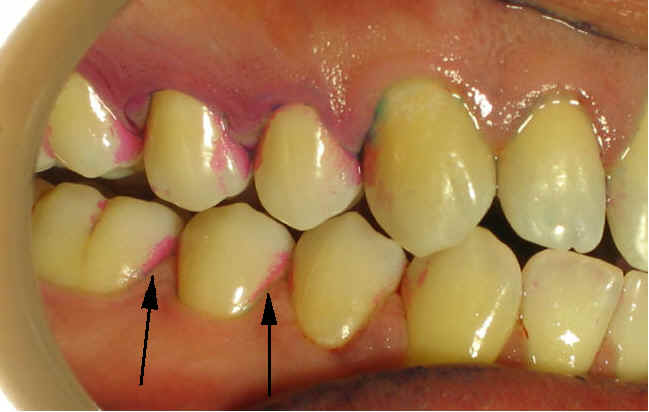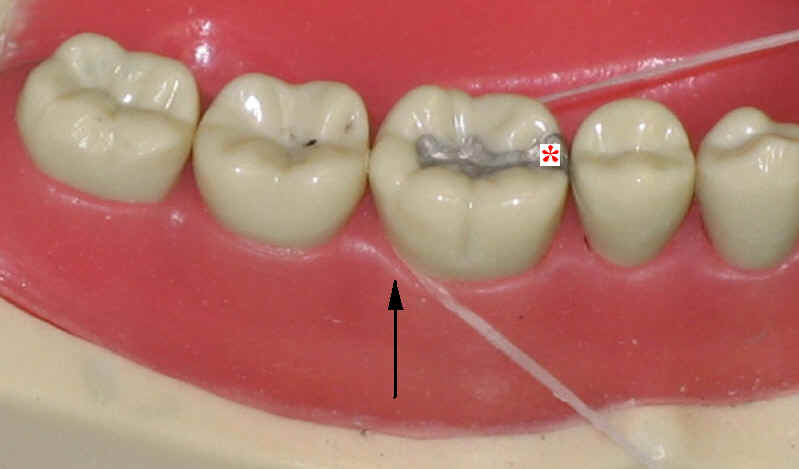 |
 |
|
|
Fig.1 |
Fig.2 |
Fig.3 |
Dental Education Lecture: Flossing
 |
 |
|
|
Fig.1 |
Fig.2 |
Fig.3 |
In lecture How to Brush, we introduce a method to show plaque, a film deposited by germs in our mouth. The plaque is a culprit that causes our cavities and gum diseases. We need to remove plaque as much as possible. The special staining method shows that there is intense accumulation of plaque at tooth-gum junction (Fig.1 in lecture How to Brush). After thorough brushing, plaque is reduced dramatically. However, plaque remains in the area between two neighboring teeth at tooth-gum junction (pink stain, arrows, Fig.1 in this lecture). It is obvious that toothbrush bristles cannot reach these hidden areas for cleanup. We need to use floss for further and more thorough cleaning.
There are two surfaces between two neighboring teeth. When floss passes through between the teeth, we should clean these two surfaces. Let us floss the front surface of the last 2nd tooth (Fig.2). Pass through the contact area, bend floss slightly backward to increase contact between floss and tooth surface, and slide the floss against the surface down until the floss reach the bottom of the gum groove. For each surface, floss should glide up and down five times (we will discuss this in detail in future lectures). By diligent and repeated motion of flossing, plaque shown in Fig.1 (arrows) should be removed.
Then we take out the floss, change to a new segment and pass through the same contact area. But we need to bend floss slightly forward, slide against the back surface of the last 3rd tooth, all the way down the gum groove (arrow, Fig.3). We should also glide floss up and down five times for thoroughness. Then floss the next space between teeth. The filling in Fig3 with asterisk (*) is a typical silver filling to fix a cavity due to lack of flossing.
Although flossing is a tedious job, it is the most efficient way to prevent cavities between teeth and gum diseases. We need to do it on daily basis. In next lecture, we are going to show you what will happen if you do not floss regularly.
Xin Wei, DDS, PhD, MS 1st edition 01/19/2009 , last revision 03/20/2010